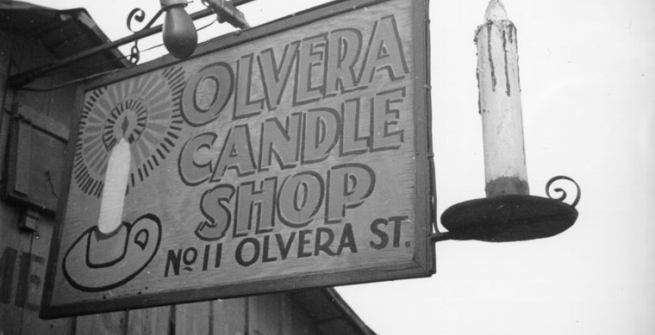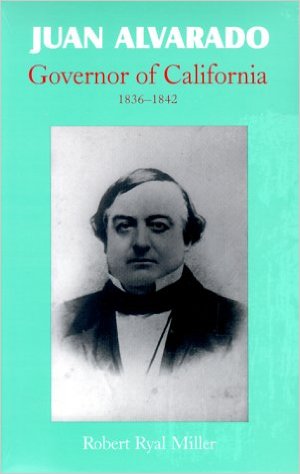In a city as a diverse as Los Angeles, there is one thing we almost all have in common—traffic. While stuck at intersections or on freeways, pondering the heritage of our fair city is probably not on the forefront of everyone's minds. However, the history and diversity of Los Angeles is reflected all around us, and the street names are a good example of the past coinciding with the present. Many of these street names serve as reminders of the Latino influence in shaping the city we know today.
Some of these streets are:
Biography of Juan Alvarado, available for checkout in the History & Genealogy Department.
Alvarado Street: Named for Juan Bautista Alvarado (1809-1882). Born in the Monterey area to parents of Mexican lineage, Alvarado served as governor of Alta California from 1836 -1842.
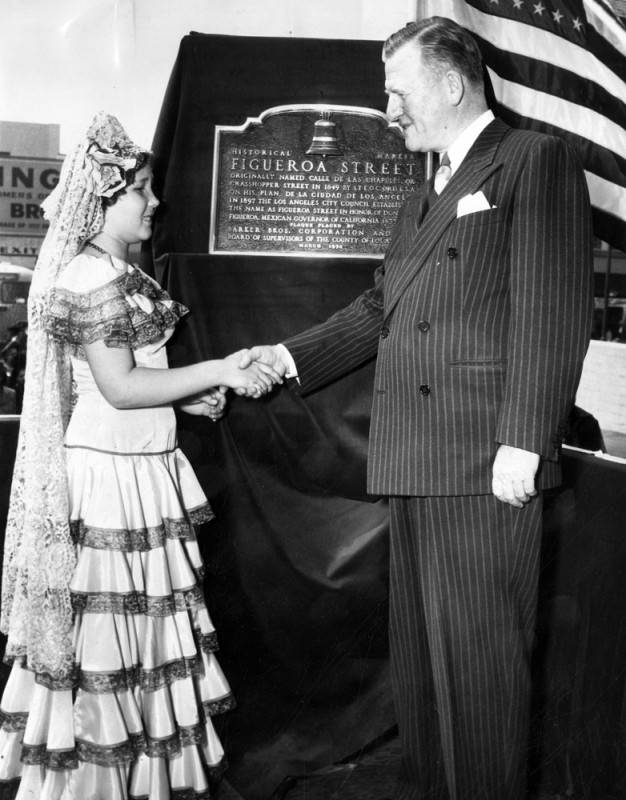
Frances Figueroa, great-great grandniece of Don Jose Figueroa, and Neil Petree, president of Barker Bros. are shown in 1950 placing of historical marker on the Figueroa St. side of the Barker Bros. building. (Valley Times Collection)
Figueroa Street: Named for José Figueroa (1792 – 1835), who from 1833 - 1835, also served as governor of Alta California.
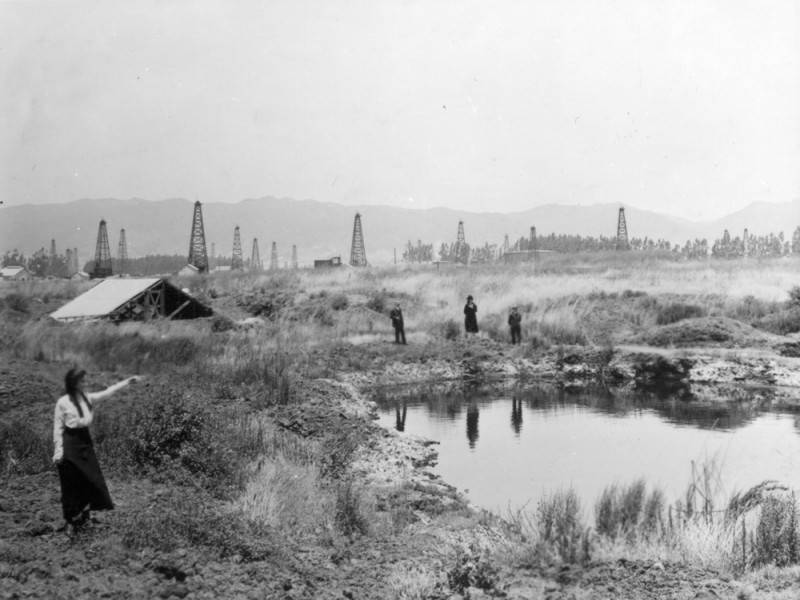
Four people gather around a tar pit near the Hancock oil field, circa 1910. (Security Pacific National Bank Collection)
La Brea Avenue: Spanish for "the tar," La Brea runs through the area that at one time encompassed the La Brea Rancho which contained numerous ponds of tar, rich with the fossils of Ice Age animals.

View of buildings on the Rancho La Cienega O' Paso de la Tijera in 1924, located near what is now the 2400 block of S. Crenshaw Boulevard. (Security Pacific National Bank Collection)
La Cienega Boulevard: Similar to La Brea, La Cienega takes its name from a rancho. Derived from, ciénaga, the Spanish word for "swamp," La Cienega references the marshes that were prominent between Baldwin Hills and Beverly Hills.
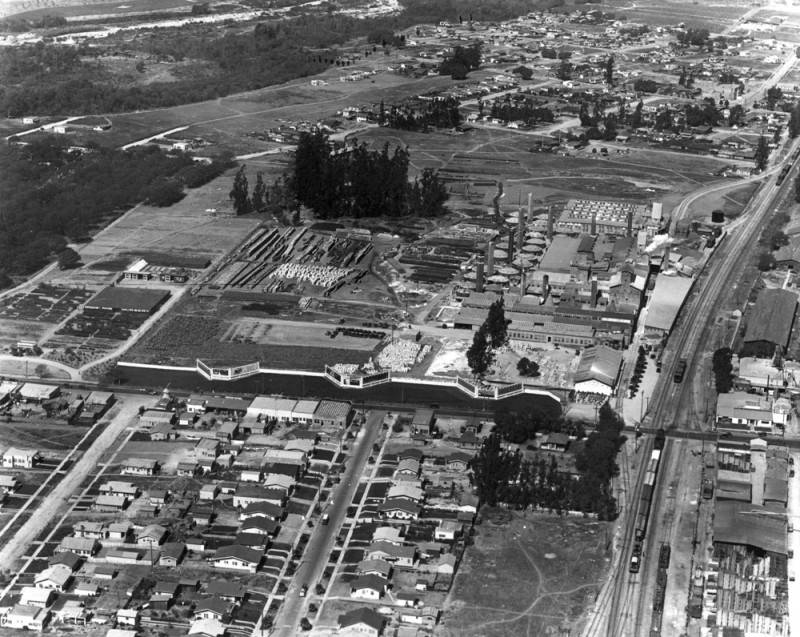
Aerial view of Los Feliz Boulevard in Atwater Village, circa 1924. Part of the Tam O'Shanter Restaurant can be seen in the bottom center. (Security Pacific National Bank Collection)
Los Feliz Boulevard: This east-west street which runs past Griffith Park, before turning into Western Avenue, also pays homage to the rancho period. Namesake José Vicente Feliz (ca 1741-1822), who was born in Mexico, came to reside in the area after being awarded a 6,000+ acre land grant by King Carlos III when California was under Spanish control.
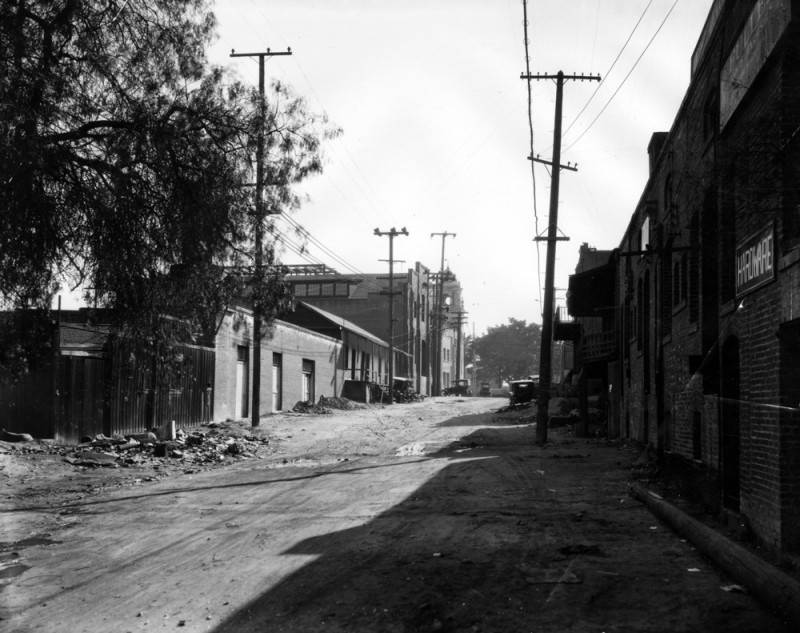
A 1925 view of Olvera Street, before its transformation to a tourist destination. (Security Pacific National Bank Collection)
Olvera Street: This small, but well known street takes its name from Augustin Olvera (1818–1876), an early Los Angeles pioneer who in 1850 became the first judge of the newly formed County of Los Angeles.
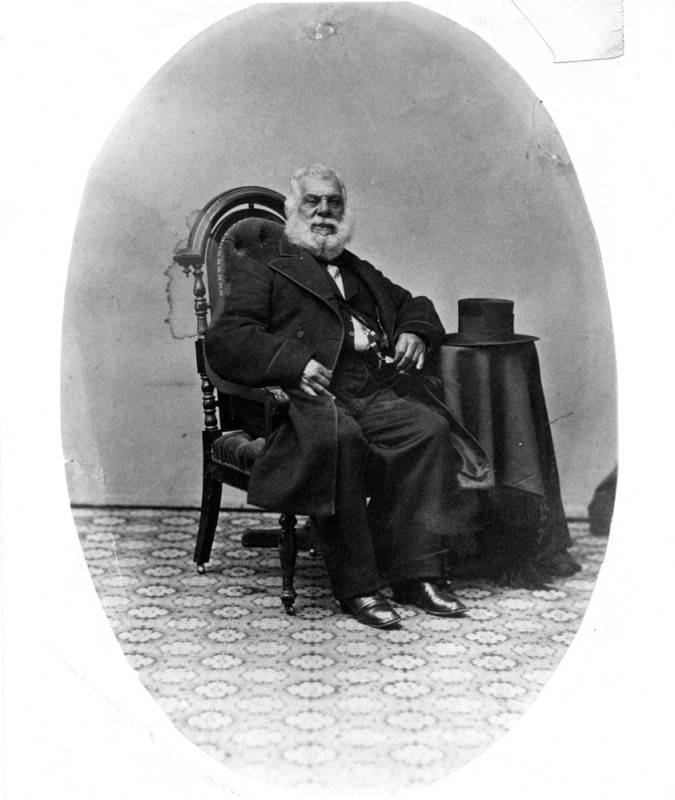
Undated portrait of Pio Pico. (Security Pacific National Bank Collection)
Pico Boulevard: This major thoroughfare is one of many places in Los Angeles County bearing the name of Pio Pico (1801-1894). Pico served two terms as Governor of Alta California, and the last to serve under Mexican rule.
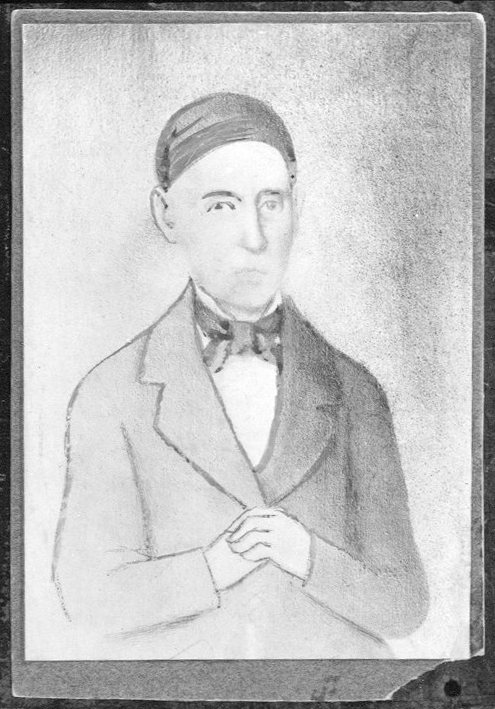
An artist rendering of Francisco Xavier Sepúlveda. (Security Pacific National Bank Collection)
Sepulveda Boulevard: The longest street in both the City and County of Los Angeles, takes its name from the prominent Sepúlveda Family, of who Francisco Xavier Sepúlveda (1742-1788) was the patriarch.
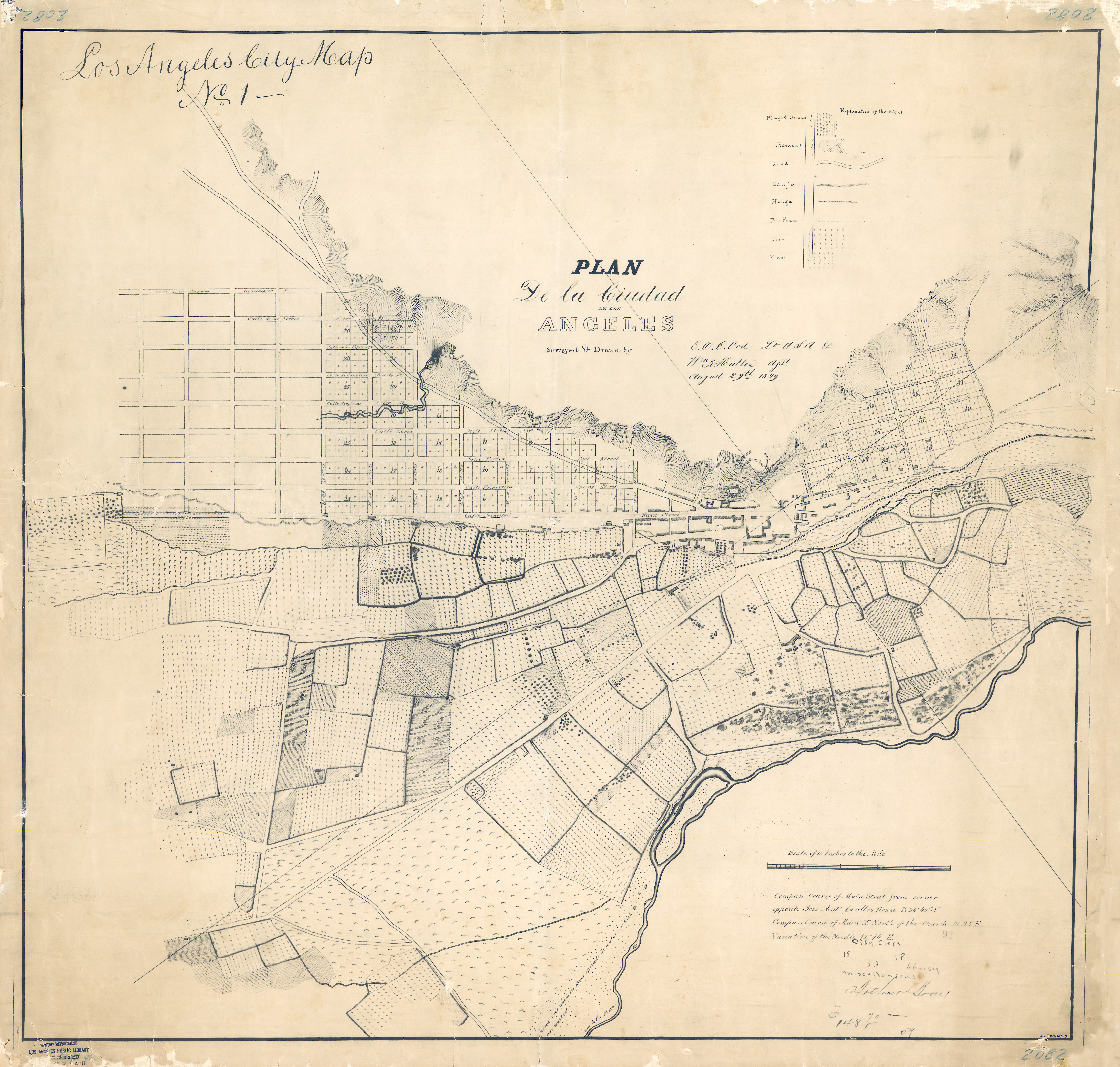
1949 Ord Survey, showing Calle Primavera. (Los Angeles Public Library Map Collection)
Spring Street: According to Los Angeles legend, when Lieut. Edward O. C. Ord (for whom Ord Street was named) was tasked with surveying Los Angeles streets for the first time in 1849, he was also asked to name one of the streets. As many of the roads bore Spanish names, he opted for Primavera which happened to be the nickname for his sweetheart, Senorita Trinidad de la Guerra. As the city grew, "Primavera" endured, though was later translated to the English "Spring."
